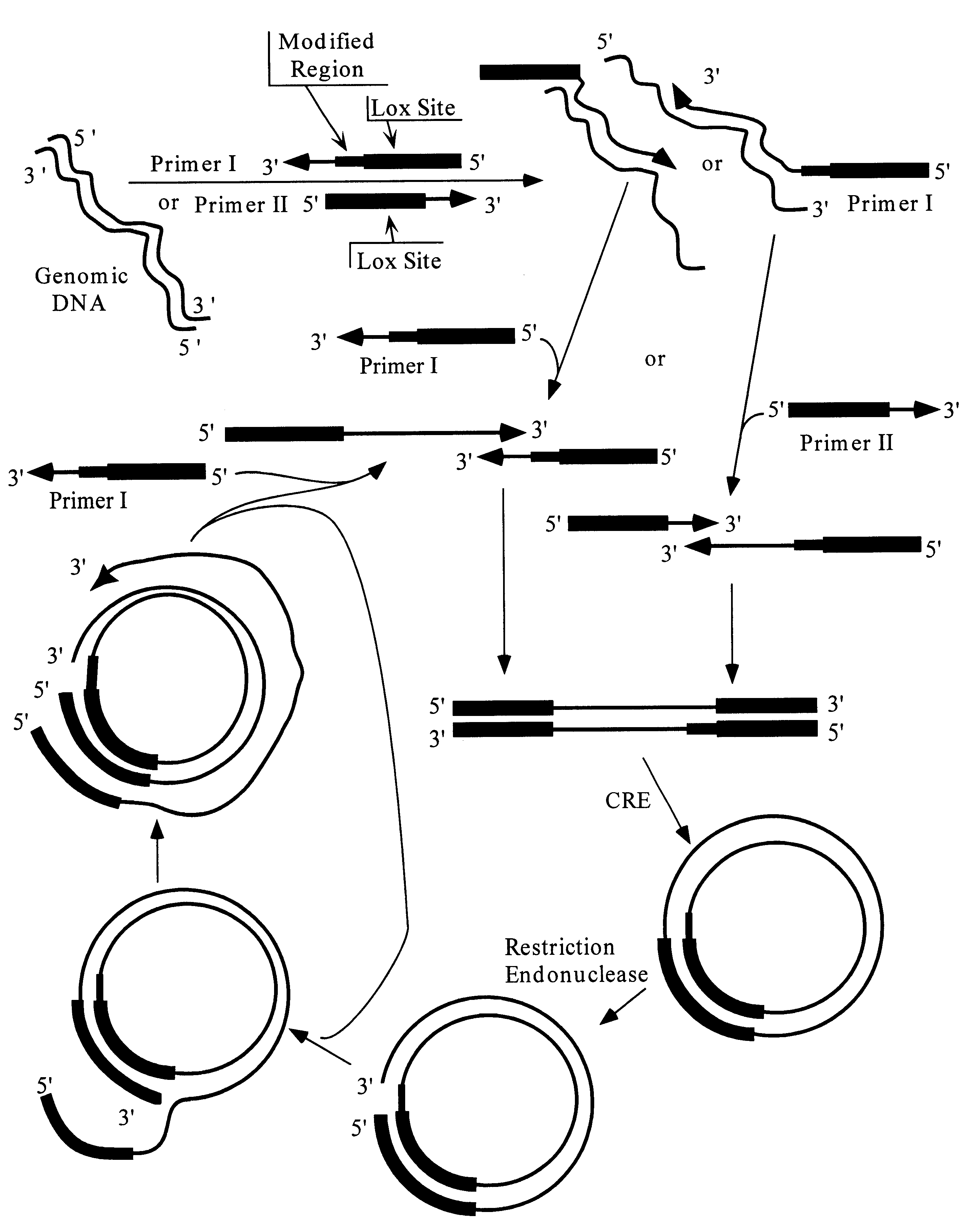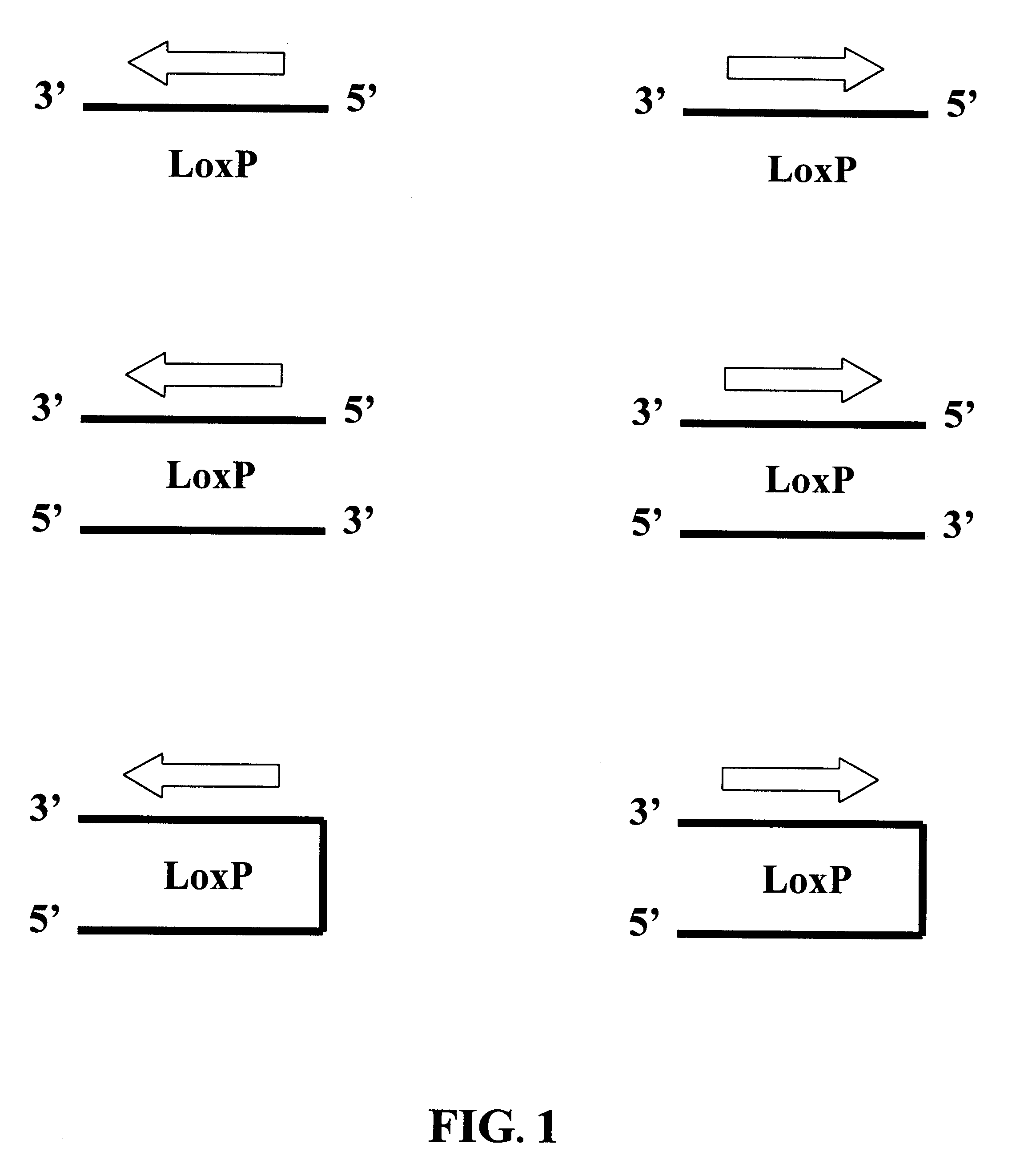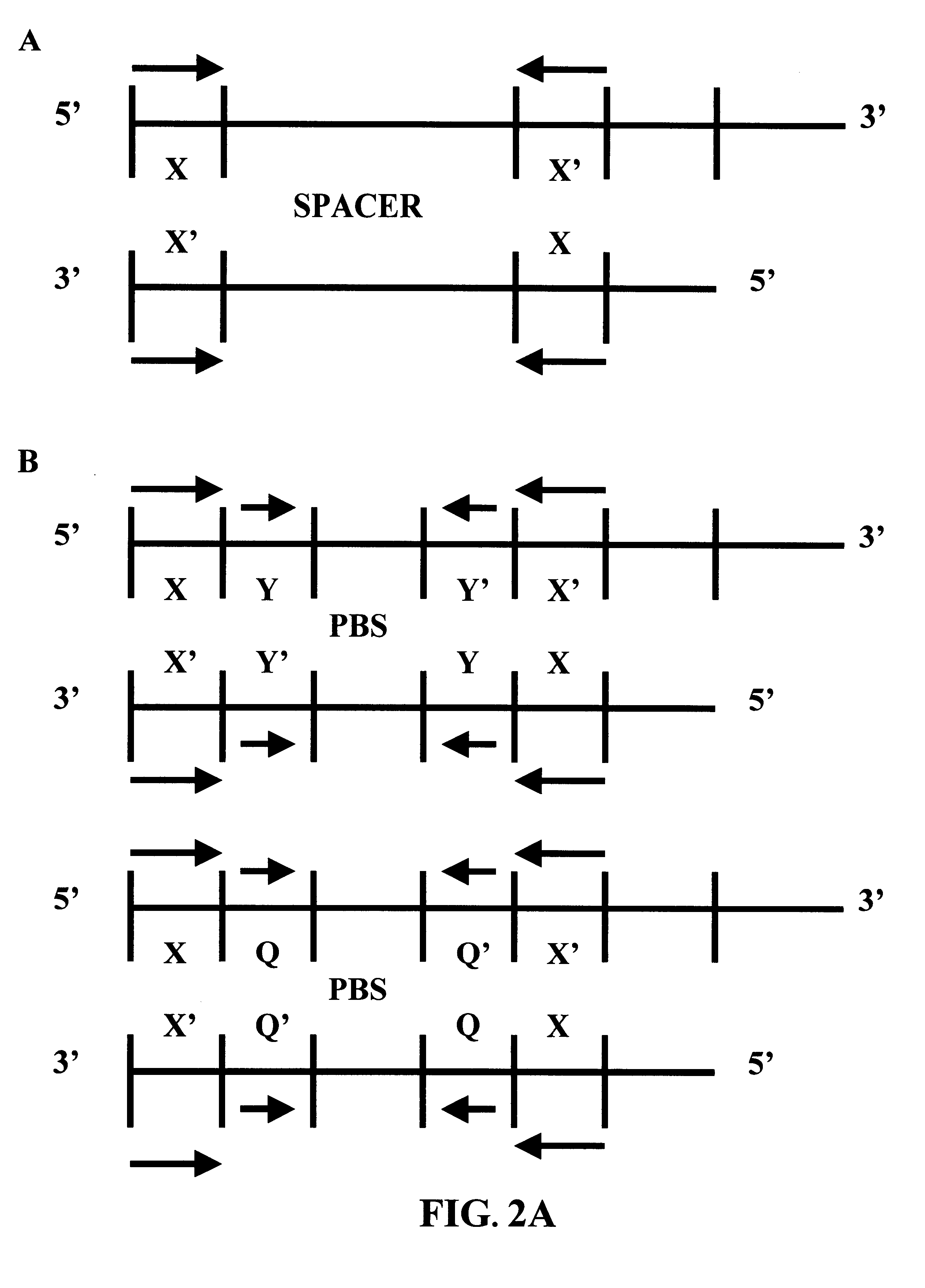Amplification of nucleic acid molecules via circular replicons
a nucleic acid and circular technology, applied in the field of amplification of nucleic acid molecules via circular replicons, can solve the problems of inability to readily clone a target species in a sample under evaluation, and inability to achieve assay sensitivity
- Summary
- Abstract
- Description
- Claims
- Application Information
AI Technical Summary
Benefits of technology
Problems solved by technology
Method used
Image
Examples
example 2
Isothermal Amplification Method II
FIGS. 11 and 12 provide diagrammatic representations of alternate preferred methods for achieving the amplification of a desired region of genomic DNA.
With reference to FIG. 11, an amplification "cassette" is employed. The cassette comprises a linear double-stranded polynucleotide having directly oriented lox sites at its two termini. The lox sites are separated from one another by a double-stranded region that comprises a hemi-modified restriction site, and a target restriction site region that contains one or more restriction sites suitable for receiving the target DNA fragment(s). Most preferably, the target restriction site region will have multiple restriction cleavage sites, such that, by treating the cassette with multiple restriction endonucleases two fragments are produced, one of which contains a lox site and a first partial restriction site, and the other of which contains a second, and preferably different partial partial restriction sit...
example 3
Attributes of the Isothermal Amplification Methods I and II
Several aspects of the embodiments discussed in Examples 1 and 2 are noteworthy. FIGS. 9-12 show the circularization of a single "full-length" linear molecule into a "unit length" circle. However, the same lox orientations responsible for circularization of nucleic acid molecules can mediate multiple head to tail joining of full-length linear molecules so as to form a "multi-unit length" circle. Significantly, since the lox site is asymmetric, such head to tail joining conserves the both the orientation of lox sites, and the orientation of strands. Thus, when multiple full-length linear double-stranded molecules are joined together, all of the target strand sequences of the individual full-length linear molecules are present on the same strand of the "multi-unit length" circle; similarly, all of the target complement strand sequences of the individual full-length linear molecules are present on the other strand of the "multi...
example 4
Isothermal Amplification Method III
FIG. 13 provides a diagrammatic representation of a second preferred method for achieving the amplification of a desired region of genomic DNA.
With reference to FIG. 13, a sample of double-stranded genomic DNA is denatured, as by heat, etc., and incubated in the presence of an Amplification Primer molecule whose 3' terminus is complementary to a target polynucleotide region whose amplification is desired.
In the preferred embodiment shown in FIG. 13, the Amplification Primer need not be modified in any respect. It merely needs to be of sufficient length to permit stable hybridization.
The primer is incubated with the denatured DNA of the sample under conditions which permit both hybridization and template dependent primer extension to occur. Thus, a polymerase and (non-modified) nucleotides are provided to the reaction. The primer extension reaction is terminated by modifying the reaction conditions to cause the denaturation of the extended primer fr...
PUM
| Property | Measurement | Unit |
|---|---|---|
| pH | aaaaa | aaaaa |
| volume | aaaaa | aaaaa |
| volumes | aaaaa | aaaaa |
Abstract
Description
Claims
Application Information
 Login to View More
Login to View More - R&D
- Intellectual Property
- Life Sciences
- Materials
- Tech Scout
- Unparalleled Data Quality
- Higher Quality Content
- 60% Fewer Hallucinations
Browse by: Latest US Patents, China's latest patents, Technical Efficacy Thesaurus, Application Domain, Technology Topic, Popular Technical Reports.
© 2025 PatSnap. All rights reserved.Legal|Privacy policy|Modern Slavery Act Transparency Statement|Sitemap|About US| Contact US: help@patsnap.com



